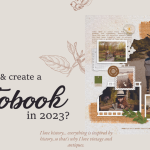In the world of storytelling, characters are the heart and soul of any narrative. Among them, round characters stand out due to their depth and complexity. But what exactly is a round character, and why are they so crucial to a story? In this article, we’ll dive into the definition of round characters, explore their key traits, and see how they can make a story come alive
Characteristics of Round Characters
A round character is typically well-developed and multi-faceted, making them feel like real, living individuals. Here’s a closer look at what sets them apart:
Depth and Complexity
Round characters are more believable and sympathetic because of their depth and complexity. Round characters have complex personalities with a range of strengths, faults, and inconsistencies, in contrast to flat characters who lack specific attributes.
Because of their richness, readers are able to perceive them as actual persons with deep emotional lives and motivations. They are lively and captivating due to their well-developed qualities and internal conflicts, which enhance the narrative by giving it more depth and authenticity.
You may also like: Print on Demand vs. Traditional Publishing: Which is Right for You?
Realism and Relatability
A round character is characterized by their relatability and realism, which give them the impression of being actual people. These characters’ nuanced motivations, feelings, and personalities reflect the complexity of actual life.
Because of their complexity, readers are able to identify with these characters, which amplifies the significance of their experiences and choices.
Round characters make a personal connection with readers by reflecting real-life problems and personal development, which adds to the story’s overall realism.
Growth and Change
The ability of a character to develop and evolve over the course of a narrative is what makes them round. Round characters, in contrast to flat ones, experience substantial personal growth and disclose new aspects of their personalities as the story develops.
It is because of this progression that they become credible and personable. For example, a round character may begin with a single set of beliefs and develop into a more complicated person with a variety of perspectives and actions as a result of experiences and conflicts. The story gains depth and authenticity from its dynamic evolution.
Psychological Complexity
Psychological complexity, or having a variety of drives, feelings, and characteristics that give them a realistic, multifaceted feel, characterizes a round persona.
Round characters develop and have depth throughout the narrative, in contrast to flat characters, who are frequently one-dimensional.
Their believability is enhanced by their internal conflicts, personal struggles, and developing ideas, which makes them more approachable and interesting to readers. The real difference between simpler, flat characters and round characters is their psychological complexity.
You may also like: Looking for a Professional Book Layout Designer?
Creating Round Characters
Developing a round character involves more than just giving them a backstory. Here’s how to create compelling and multi-dimensional characters:
Understand the Character’s Background
It’s crucial to comprehend a circular character’s past in order to fully comprehend them. A well-rounded character has a complex past that influences their motivations and behaviors.
Their complexity is influenced by their upbringing, personal problems, and past experiences. Their background gives their actions and choices context, which increases their relatability and complexity.
Readers are given insight into the inner tensions and development of a round character by delving into their past.
Developing a Multi-Dimensional Personality
Concentrate on cultivating a multifaceted personality in order to produce an engaging round character. A spherical character has more nuance and complexity than a flat one.
This indicates that they have a range of characteristics, both positive and negative, that help to make them seem relevant and believable.
Throughout the narrative, their actions, intentions, and feelings ought to alter to represent their development and maturation. You can increase a round character’s authenticity and improve reader engagement by offering them a combination of good and bad traits.
Crafting Internal Conflicts
Creating internal conflicts that show character depth is crucial to creating a fascinating round character. Round characters have multiple facets and intricate internal conflicts that shape how they evolve throughout the narrative.
These disputes are frequently caused by competing desires, moral quandaries, or character defects. Writers may make their round characters more lively and approachable by highlighting these internal conflicts,
which helps readers better understand the characters’ motivations and development. Creating these kinds of internal tensions gives a character’s journey more depth and reality.
Ensuring Consistency and Evolution
In order to establish a round character, consistency and progression are needed. A round character should evolve or alter during the narrative without deviating from their essential characteristics.
This implies that while their choices and behaviors must fit their preexisting personalities, they must also change in a convincing manner.
A round character, for instance, can begin as hesitant and progressively grow more self-assured, exhibiting a constant yet dynamic character arc. Consistency combined with growth makes for a rounded persona that readers will find interesting and real.
You may also read: What is Plot Point and Why It’s Crucial for your Story’s Success
Examples of Round Characters in Literature
Round characters appear across various genres and time periods. Here are a few notable examples:
- Classic Literature Examples: Consider Elizabeth Bennet from Jane Austen’s Pride and Prejudice. Her evolving understanding of herself and others adds depth to her character and enriches the narrative.
- Modern Literature Examples: In J.K. Rowling’s Harry Potter series, characters like Harry Potter and Severus Snape display significant complexity and growth, making them memorable and impactful.
- Examples from Different Genres: Round characters can be found in any genre. For instance, Katniss Everdeen from Suzanne Collins’ The Hunger Games displays remarkable growth and complexity, fitting seamlessly into the dystopian genre.
Round Characters vs. Flat Characters
Understanding the difference between round and flat characters is crucial for effective storytelling:
Definition of Flat Characters
Flat characters are often one-dimensional and lack significant depth. They typically serve a specific purpose in the plot but do not undergo substantial development.
Key Differences Between Round and Flat Characters
Round characters have depth, change over time, and exhibit a range of emotions and traits. Flat characters, on the other hand, are static and simplistic.
Impact on the Story and Reader
Round characters enhance the emotional depth and complexity of a story, making it more engaging. Flat characters might be useful for advancing the plot but do not usually create a lasting impact on readers.
The Role of Round Characters in Storytelling
Round characters play a vital role in storytelling:
Enhancing Plot Development: Because they provide the narrative more nuance and complexity, round characters are essential to the development of the storyline.
Round characters, as opposed to flat ones, show a variety of emotions and personal development, which increases the importance of their choices and actions. Their complex personalities frequently propel the tale along since their changing conflicts and goals make for more interesting and convincing stories.
Writers can create stories where character development skilfully integrates and enhances the main plot by emphasizing the development of round characters.
Building Emotional Connections: Round characters are essential for establishing an emotional bond with readers. Round characters, in contrast to flat ones, are multifaceted and diverse, exhibiting a variety of emotions and characteristics that increase their relatability.
This complexity strengthens the emotional connection by enabling readers to relate to their progress and tribulations. Round characters heighten the reader’s engagement in the narrative by highlighting their weaknesses and personal growth, which makes their journey more memorable and compelling.
Reflecting Themes and Messages: Round characters are essential in storytelling because they help reflect the themes and messages of a story.
Unlike flat characters, round characters have complex personalities and evolve throughout the narrative. Their development and experiences often mirror the central themes of the story, making these themes more relatable and impactful for the audience.
By showing how a round character grapples with challenges, writers can effectively convey deeper messages and enrich the overall meaning of their work.
You may also read: Narrative Structure: Definition, Examples and Writing Tips
Tips for Writers
Here are some tips to help you create compelling round characters:
Creating Relatable Motivations: Making sure a character’s aspirations and goals are understandable to readers is necessary to give them believable reasons.
Give your character strong, convincing justifications for their behavior at the outset; these should be based on actual human feelings and experiences. A character motivated by a fear of failing, for instance, would experience self-doubt, which would add interest to their journey.
You may increase the audience’s ability to relate to and remember your round character by creating reasons that seem real and pertinent.
Balancing Strengths and Weaknesses: Developing a captivating, well-rounded character requires striking a balance between strengths and flaws. A well-rounded character should have both redeeming qualities and weaknesses to give them a genuine, sympathetic sense.
An individual possessing a strong sense of justice could potentially face issues related to impulsivity. By adding nuance and complexity, this balance makes the character more relatable to readers.
Writers can create dynamic and captivating characters that meet the criteria of a round character by showcasing a combination of their strengths and faults.
Using Backstory Effectively: A well-developed backstory is essential to creating a fully realised persona. In order to give your characters a sense of realism and complexity, include elements of their pasts into their motivations and actions today.
This backstory gives characters additional depth and relatability by illuminating their motivations for acting in particular ways. Don’t, however, bore your audience with too many facts.
Rather, progressively disclose the history to augment the character’s complexity and make a significant impact on their development throughout the narrative.
Developing Distinctive Voices: Developing distinctive voices for round characters can significantly enhance their depth and relatability. To achieve this, focus on crafting unique speech patterns, quirks, and viewpoints that reflect their personality and experiences.
For example, a round character with a background in art might use vivid, descriptive language, while a character with a scientific mindset might be more precise and analytical.
These distinctive voices not only differentiate characters but also make them more memorable and engaging for readers.
Conclusion
Round characters are essential for creating engaging and memorable stories. Their depth, complexity, and growth not only enrich the narrative but also foster a deeper connection with readers. By understanding and implementing the traits of round characters, writers can craft stories that resonate on a profound level.
















